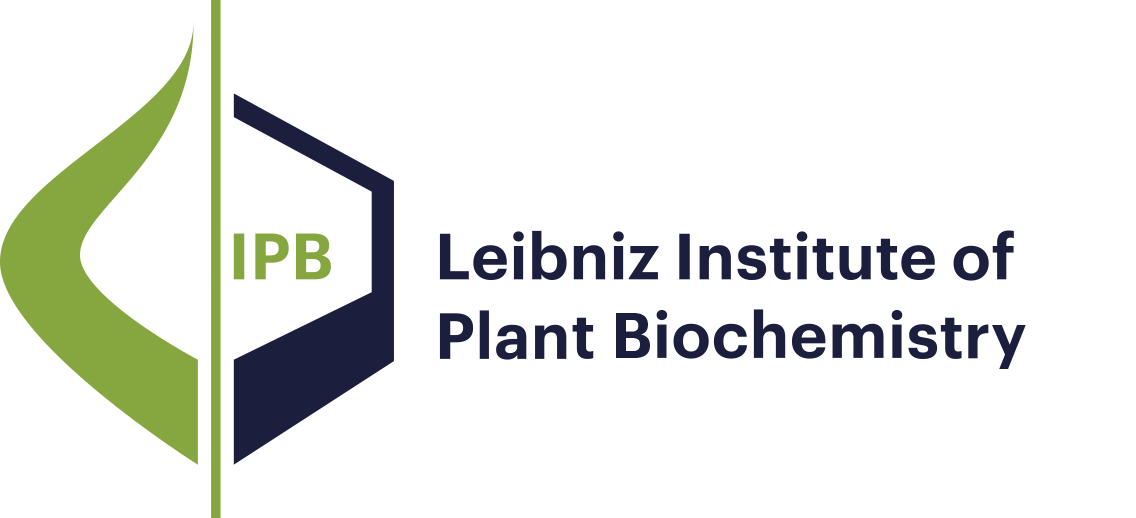Publications - Molecular Signal Processing
- Results as:
- Print view
- Endnote (RIS)
- BibTeX
- Table: CSV | HTML
Publications
Publications
This page was last modified on 27 Jan 2025 .
Research Mission and Profile
Molecular Signal Processing
Bioorganic Chemistry
Biochemistry of Plant Interactions
Cell and Metabolic Biology
Independent Junior Research Groups
Program Center MetaCom
Publications
Good Scientific Practice
Research Funding
Networks and Collaborative Projects
Symposia and Colloquia
Alumni Research Groups
Publications
Publications - Molecular Signal Processing
Publications
The large WRKY transcription factor family is mainly involved in regulating plant immune responses. Arabidopsis WRKY33 is a key transcriptional regulator of hormonal and metabolic processes towards Botrytis cinerea strain 2100 infection and is essential for resistance. In contrast to B. cinerea strain 2100, the strain B05.10 is virulent on wild‐type (WT) Col‐0 Arabidopsis plants highlighting the genetic diversity within this pathogen species. We analysed how early WRKY33‐dependent responses are affected upon infection with strain B05.10 and found that most of these responses were strongly dampened during this interaction. Ectopic expression of WRKY33 resulted in complete resistance towards this strain indicating that virulence of B05.10, at least partly, depends on suppressing WRKY33 expression/protein accumulation. As a consequence, the expression levels of direct WRKY33 target genes, including those involved in the biosynthesis of camalexin, were also reduced upon infection. Concomitantly, elevated levels of the phytohormone abscisic acid (ABA) were observed. Molecular and genetic studies revealed that ABA negatively influences defence to B05.10 and effects jasmonic acid/ethylene (JA/ET) and salicylic acid (SA) levels. Susceptibility/resistance was determined by the antagonistic effect of ABA on JA, and this crosstalk required suppressing WRKY33 functions at early infection stages. This indicates that B. cinerea B05.10 promotes disease by suppressing WRKY33‐mediated host defences.
Publications
In barley leaves, there is a dramatic alteration of gene expression upon treatment with jasmonates leading to the accumulation of newly formed proteins, designated as jasmonate‐inducible proteins (JIPs). In the present study, a new jasmonate‐inducible cDNA, designated pHvJS37, has been isolated by differential screening of a γgt10 cDNA library constructed from mRNA of jasmonate‐treated barley leaf segments. The open reading frame (ORF) encodes a 39‐9 kDa polypeptide which cross‐reacts with antibodies raised against the in vivo JIP‐37. The hydropathic plot suggests that the protein is mainly hydrophilic, containing two hydrophilic domains near the C‐terminus. Database searches did not show any sequence homology of pHv.JS37 to known sequences. Southern analysis revealed at least two genes coding for JIP‐37 which map to the distal portion of the long arm of chromosome 3 and are closely related to genes coding for JIP‐23. The expression pattern of the JIP‐37 genes over time shows differential responses to jasmonate, abscisic acid (ABA), osmotic stress (such as sorbitol treatment) and desiccation stress. No expression was found under salt stress. From experiments using an inhibitor and intermediates of jasmonate synthesis such as α‐linolenic acid and 12‐oxophytodienoic acid, we hypothesize that there is a stress‐induced lipid‐based signalling pathway in which an endogenous rise of jasmonate switches on JIP‐37 gene expression. Using immunocytochemical techniques, JIP‐37 was found to be simultaneously located in the nucleus, the cytoplasm and the vacuoles.
This page was last modified on 27 Jan 2025 .

